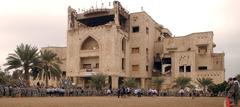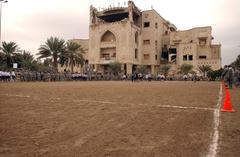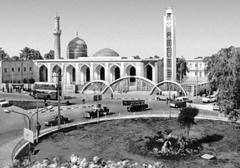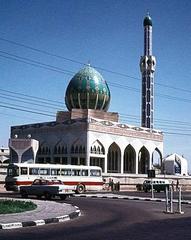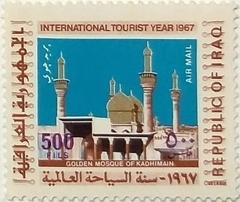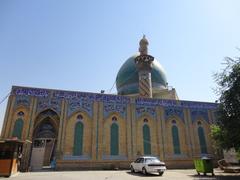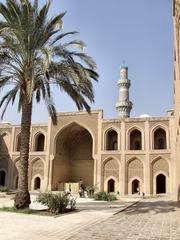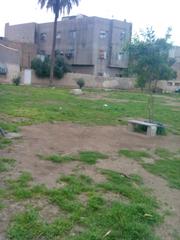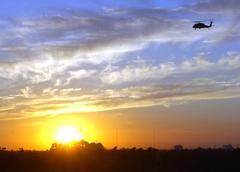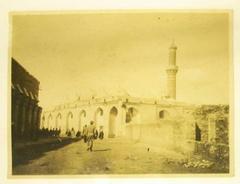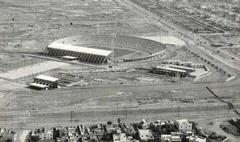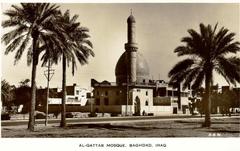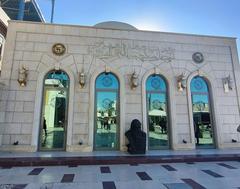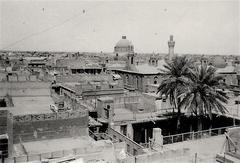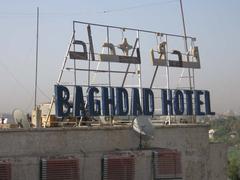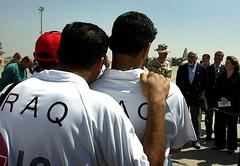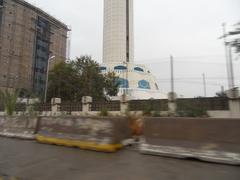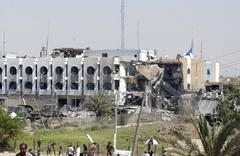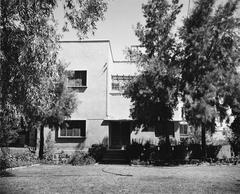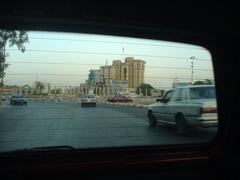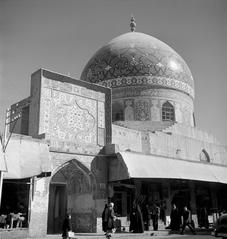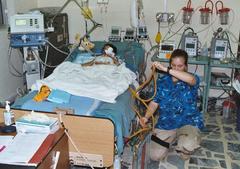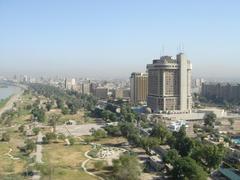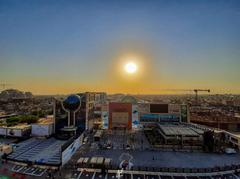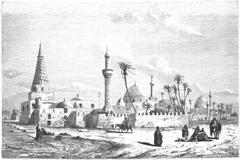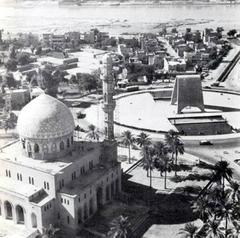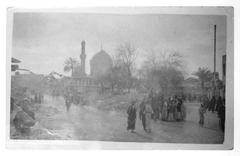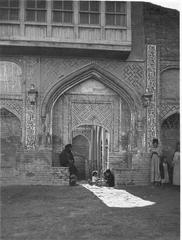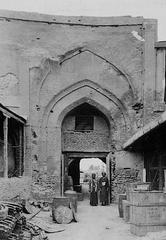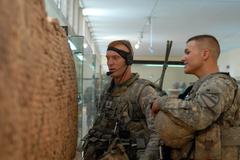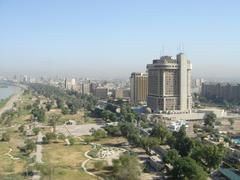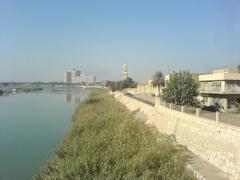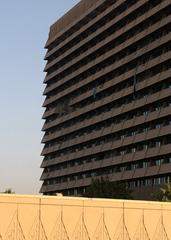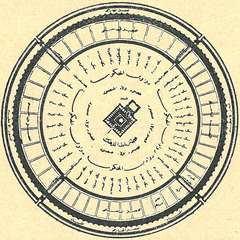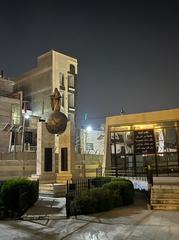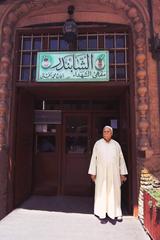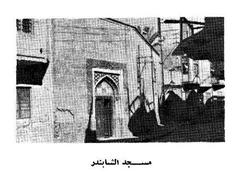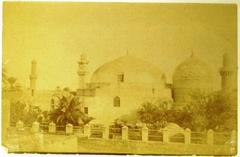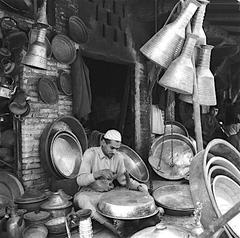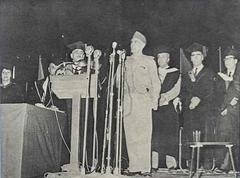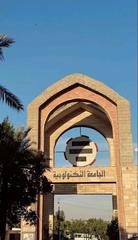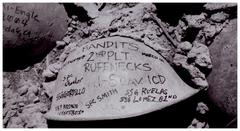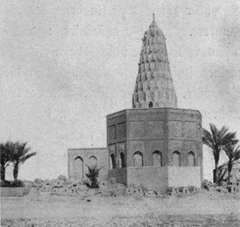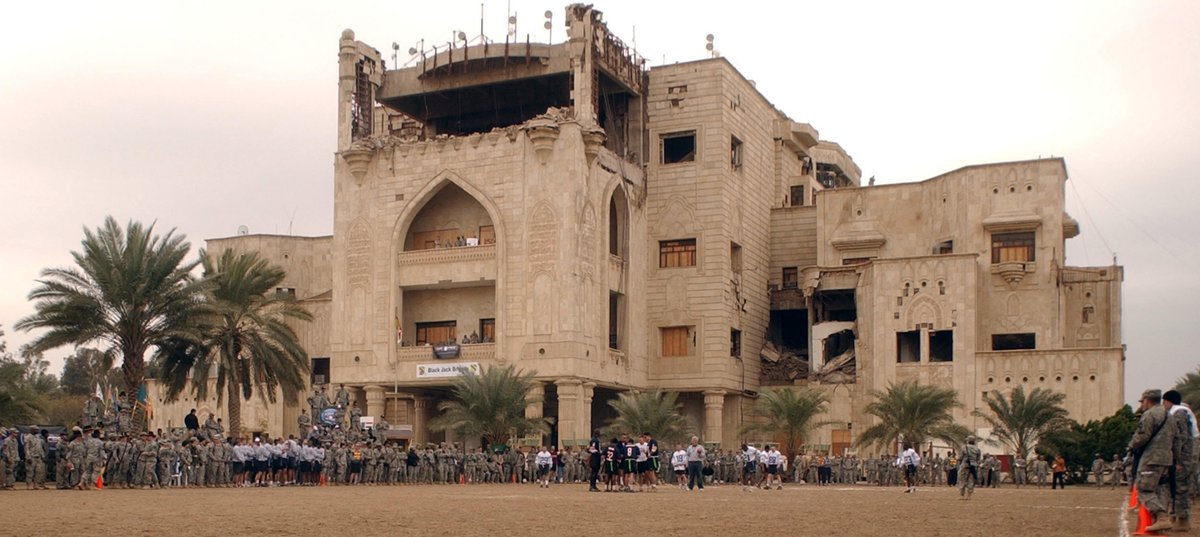
Comprehensive Guide to Visiting Al-Salam Palace, Baghdad, Iraq
Published Date: 25/07/2024
Introduction to Al-Salam Palace
Al-Salam Palace, also known as the Palace of Peace, is a significant historical and cultural landmark in Baghdad, Iraq. This architectural marvel stands as a testament to the country’s rich and tumultuous history, embodying both opulence and resilience. Originally constructed in the late 1990s under the regime of Saddam Hussein, the palace was intended as a symbol of his power and authority. It replaced the Republican Guard Headquarters, which was destroyed during Operation Desert Storm in 1991 (Wikipedia). The palace’s history took another dramatic turn during the 2003 invasion of Iraq when it was taken over by coalition forces and used as a military headquarters. Following the U.S. military drawdown, the palace was handed back to the Iraqi Government in 2012 (Wikipedia). Today, Al-Salam Palace stands not only as a symbol of Iraq’s past struggles but also as a beacon of its efforts toward peace and restoration. Located near other significant landmarks such as the Baghdad Mall and Baghdad Zoo, the palace offers visitors a unique glimpse into Iraq’s grand architectural tradition and its complex history (Trek Zone). This guide aims to provide comprehensive information for those planning to visit Al-Salam Palace, covering its historical context, architectural significance, practical visitor information, and tips to enhance the overall experience.
Table of Contents
- Al-Salam Palace - History, Visitor Tips, and Must-See Attractions in Baghdad
- Origins and Construction
- Role During the Iraq War
- Post-Invasion Use
- Architectural Features
- Symbolism and Design
- Connection to Baghdad’s Urban History
- Decline and Restoration
- Modern Significance
- Al-Salam Palace Visiting Tips and Nearby Attractions
- Practical Visitor Information
- Frequently Asked Questions (FAQ)
- Visitor Tips for Al-Salam Palace, Baghdad - Hours, Tickets, and More
Al-Salam Palace - History, Visitor Tips, and Must-See Attractions in Baghdad
Origins and Construction
Al-Salam Palace, also known as the Palace of Peace, is a significant landmark in Baghdad, Iraq. The palace is situated on the site of the former Republican Guard Headquarters, which was destroyed during Operation Desert Storm in 1991. Construction of the palace began shortly after the destruction of the headquarters and was completed in early 1999. The palace was initially built as a residence for the then-Iraqi president, Saddam Hussein. The construction of Al-Salam Palace was part of a broader initiative by Saddam Hussein to build numerous opulent palaces across Iraq, symbolizing his power and authority (Wikipedia).
Role During the Iraq War
During the 2003 invasion of Iraq, Al-Salam Palace was taken over by coalition forces. The palace sustained significant damage during the “shock and awe” campaign, which involved several airstrike attacks aimed at crippling the Iraqi government’s infrastructure. Despite the damage, the palace served as the headquarters for the Joint Area Support Group and was known to coalition forces as Camp Prosperity and Forward Operating Base (FOB) Prosperity (Wikipedia).
Post-Invasion Use
From April 2009 to January 2010, FOB Prosperity was managed by the Joint Area Support Group - Central (JASG-C) 32nd Infantry Brigade Combat Team (IBCT) from Wisconsin. In 2012, following the U.S. military drawdown, the Iraqi Government took over operations of the palace, and it was certified as a Republican Palace (Wikipedia).
Architectural Features
Al-Salam Palace is an architectural marvel, boasting 200 rooms and approximately 1,000,000 square feet (93,000 m²) of floor space. The palace has six floors, three of which are usable, while the others serve as ‘false floors.’ The interior is adorned with marble floors decorated with hundreds of thousands of hand-cut pieces, granite walls, and ceilings embellished with thousands of hand-carved and inlaid hand-painted flowers. The palace also features two large ballrooms, adding to its grandeur (Wikipedia).
Symbolism and Design
The palace is surrounded by a sequence of square tiles bearing the initials of Saddam Hussein (S & H), with the Arabic letters being “Saad” & “Haa.” These tiles are clearly visible from the top of the palace. Iraqis report that the palace dome used to be topped with a life-sized statue of Saddam Hussein. Additionally, fireplaces around the lake in front of the palace are actually vents used to provide fresh air to bunkers below the lake. These bunkers are now inaccessible, having been flooded and sealed off by coalition forces (Wikipedia).
Connection to Baghdad’s Urban History
The location of Al-Salam Palace is historically significant as it ties into Baghdad’s rich urban history. Baghdad, founded in 762 CE by the Abbasid Caliph al-Mansur, was originally designed as a round city known as Madinat al-Salam or the City of Peace. This design was an incredible example of early urban planning and set the stage for the Islamic Empire’s golden era. The original layout of Baghdad was the region’s largest construction project at the time, providing a throne from which the Abbasid dynasty reigned (Round City of Baghdad).
Decline and Restoration
The city of Baghdad, including the Madinat al-Salam, faced numerous challenges over the centuries. Between 836 and 892, the capital of the Abbasid Caliphate was transferred to Samarra due to problems with the caliph’s Turkish troops in Baghdad. When the caliph, al-Mu’tamid, returned, he decided not to stay in the Madinat al-Salam and settled on the eastern side of the river. The city continued to be inhabited in the centuries that followed, but it gradually went into decline, especially after the Mongol invasion in 1258, which marked the end of the Abbasid Caliphate in Baghdad (Ancient Origins).
Modern Significance
Today, Al-Salam Palace stands as a symbol of Iraq’s tumultuous history and its efforts towards restoration and peace. The palace is located near several other significant landmarks in Baghdad, including the Baghdad Mall, Baghdad Zoo, Al-Rahman Mosque, and Baghdad Clock. These attractions offer visitors a glimpse into the city’s rich cultural and historical heritage (Trek Zone).
Al-Salam Palace Visiting Tips and Nearby Attractions
For those planning to visit Al-Salam Palace, it is advisable to check the current security situation and travel advisories. The palace is located in a secure area, but visitors should remain cautious and follow local guidelines. Nearby attractions such as the Baghdad Mall and Baghdad Zoo provide additional opportunities for exploration and leisure. It is also recommended to hire a local guide to enhance the experience and gain deeper insights into the history and significance of the palace and its surroundings (Against the Compass).
Practical Visitor Information
- Visiting Hours - Al-Salam Palace is typically open to visitors from 9:00 AM to 5:00 PM, but it is best to check the current schedule as hours may vary.
- Tickets - Admission fees may apply. It is recommended to purchase tickets in advance or check with local tour operators for any package deals.
- Accessibility - The palace is partially accessible to visitors with disabilities, but certain areas may have limited access.
- Guided Tours - Hiring a local guide is highly recommended for a comprehensive understanding of the palace’s history and architecture.
Frequently Asked Questions (FAQ)
- What are the visiting hours for Al-Salam Palace? Visiting hours are typically from 9:00 AM to 5:00 PM, but it is best to confirm the current schedule before planning your visit.
- How do I get tickets to Al-Salam Palace? Tickets can be purchased in advance through local tour operators or at the entrance. It is advisable to check for any package deals or discounts.
- Is Al-Salam Palace accessible to visitors with disabilities? The palace is partially accessible, but some areas may have limited access for visitors with disabilities.
- Are guided tours available? Yes, hiring a local guide is recommended to gain deeper insights into the history and significance of the palace.
Conclusion
Al-Salam Palace is not just a historical monument but a testament to Iraq’s resilience and rich cultural heritage. Its architectural grandeur and historical significance make it a must-visit for anyone interested in understanding the complex history of Baghdad and Iraq. By exploring Al-Salam Palace, visitors can gain a deeper appreciation of the city’s past and its ongoing journey towards peace and restoration.
Call to Action
For more information on Al-Salam Palace and other historical sites in Baghdad, download our mobile app, check out related posts, and follow us on social media for regular updates.
Visitor Tips for Al-Salam Palace, Baghdad - Hours, Tickets, and More
Al-Salam Palace, also known as the Palace of Peace, is a significant historical and cultural landmark in Baghdad. This guide will provide you with all the essential tips to make the most of your visit, from opening hours and admission fees to the best times to visit and what to expect in terms of dress code and security.
Opening Hours and Admission
Al-Salam Palace is generally open to visitors from 9:00 AM to 2:00 PM, but these hours can vary. Admission fees are typically 25,000 IQD for foreigners and 3,000 IQD for Iraqi citizens. For the most accurate and up-to-date information, visit the official website.
Best Time to Visit
The best time to visit Al-Salam Palace is during the cooler months, from October to April. Baghdad can get extremely hot during the summer, with temperatures often exceeding 40°C (104°F). Visiting during the cooler months will make your experience more comfortable and enjoyable. Mornings are generally less crowded.
Guided Tours
To fully appreciate the historical and cultural significance of Al-Salam Palace, consider taking a guided tour. Local guides are knowledgeable about the palace’s history, architecture, and artifacts. You can book a tour through local travel agencies or inquire at the palace’s entrance.
Dress Code and Etiquette
Dress modestly and respectfully. Men should avoid wearing shorts, and women should cover their shoulders and knees. Wearing an abaya or a long dress is recommended for women. Always ask for permission before taking photographs, especially if locals are present.
Security and Safety
Baghdad has seen significant improvements in security over the past few years, but it’s still essential to stay informed about the current situation. Check travel advisories from your home country and follow any recommended precautions. Be aware of your surroundings and follow any security protocols in place. Traveling with a local guide or in a group adds safety.
Accessibility
Al-Salam Palace is partially accessible to visitors with mobility issues. The main entrance and some areas within the palace have ramps and pathways suitable for wheelchairs. However, certain sections may have stairs or uneven surfaces. Contact the palace in advance to inquire about the available facilities.
Nearby Attractions
After visiting Al-Salam Palace, explore nearby attractions like the Abbasid Palace, Baghdadi Museum, and Abu Hanifa Mosque. These sites offer rich historical and cultural experiences.
Photography Tips
Al-Salam Palace offers numerous photography opportunities. Visit during the early morning or late afternoon for the best lighting. Be mindful of the palace’s photography policies and avoid using flash where prohibited. Always ask for permission before photographing locals or specific events.
Refreshments and Facilities
The palace grounds typically have designated areas where you can rest. Carry a bottle of water, especially during warmer months. Small kiosks or vendors nearby sell snacks and beverages. For a more substantial meal, visit a nearby café or restaurant.
Cultural Sensitivity
Be culturally sensitive and respectful. Avoid discussing sensitive topics such as politics or religion. Engage with locals in a friendly and respectful manner for meaningful interactions and a deeper appreciation of the country’s history and culture.
Souvenirs and Shopping
Consider purchasing souvenirs from small shops or vendors near the palace. Traditional Iraqi crafts, jewelry, and other memorabilia make for unique keepsakes. Visiting local markets like the Antique Market can help you find hidden treasures and support local artisans.
Frequently Asked Questions (FAQ)
- What are the opening hours for Al-Salam Palace? The palace is generally open from 9:00 AM to 2:00 PM, but hours can vary. Check the official website for updates.
- How much is the admission fee? Admission fees are typically 25,000 IQD for foreigners and 3,000 IQD for Iraqi citizens.
- Is Al-Salam Palace accessible for visitors with mobility issues? The palace is partially accessible, with ramps and pathways suitable for wheelchairs in some areas. Contact the palace in advance for more information.
Call to Action
For more travel tips and updates, download the Audiala mobile app, check out other related posts, or follow us on social media.
Summary and Conclusion
In conclusion, Al-Salam Palace stands as a remarkable symbol of Iraq’s intricate history and enduring cultural heritage. From its origins as a grandiose project under Saddam Hussein to its role during the Iraq War and its subsequent transformation into an educational institution, the palace encapsulates a narrative of both opulence and resilience. Visitors to Al-Salam Palace can expect to be awed by its architectural grandeur, which includes intricate marble floors, hand-carved ceilings, and expansive ballrooms. The palace’s location in Baghdad also offers convenient access to other historical and cultural sites, enriching the overall experience (Wikipedia). Practical information such as visiting hours, ticket prices, and travel tips ensure that visitors can plan their trips effectively, while guided tours provide deeper insights into the palace’s significant role in Iraqi history (Against the Compass). As you explore Al-Salam Palace, you’ll gain a deeper appreciation for Iraq’s complex past and ongoing journey towards peace and restoration. For more information and updates, consider following official sources and local tour operators. By visiting Al-Salam Palace, you are not just witnessing a historical monument but partaking in Iraq’s rich tapestry of cultural heritage and resilience.
References
- Wikipedia. (n.d.). As-Salam Palace. Retrieved from https://en.wikipedia.org/wiki/As-Salam_Palace
- Wikipedia. (n.d.). Round city of Baghdad. Retrieved from https://en.wikipedia.org/wiki/Round_city_of_Baghdad
- Ancient Origins. (n.d.). Round city of Baghdad. Retrieved from https://www.ancient-origins.net/ancient-places-asia/round-city-baghdad-0011898
- Trek Zone. (n.d.). As-Salam Palace. Retrieved from https://trek.zone/en/iraq/places/48372/as-salam-palace-baghdad
- Against the Compass. (n.d.). Iraq Itinerary. Retrieved from https://againstthecompass.com/en/iraq-itinerary/
- All That’s Interesting. (n.d.). Saddam Hussein’s Palaces. Retrieved from https://allthatsinteresting.com/saddam-husseins-palaces
- AP News. (n.d.). Saddam Hussein’s palaces relics. Retrieved from https://apnews.com/article/iraq-saddam-hussein-palaces-relics-bbc0ac0857ad212fe9b40f2e38da1e8d
- Safarway. (n.d.). Al-Salam Palace. Retrieved from https://www.safarway.com/en/property/al-salam-palace
